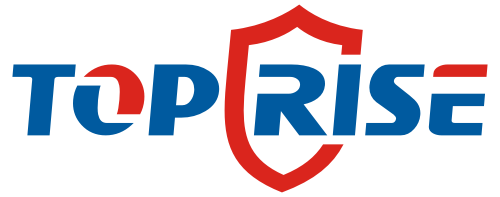Hi vis safety vest plays a crucial role in providing safety protection in construction sites, traffic control, and outdoor operations. A high-quality vest not only needs to have a good reflective effect but also requires a reasonable combination of fabric selection and weight control to ensure comfort, durability, and safety.
Common Fabric Types for hi vis safety vest
Polyester
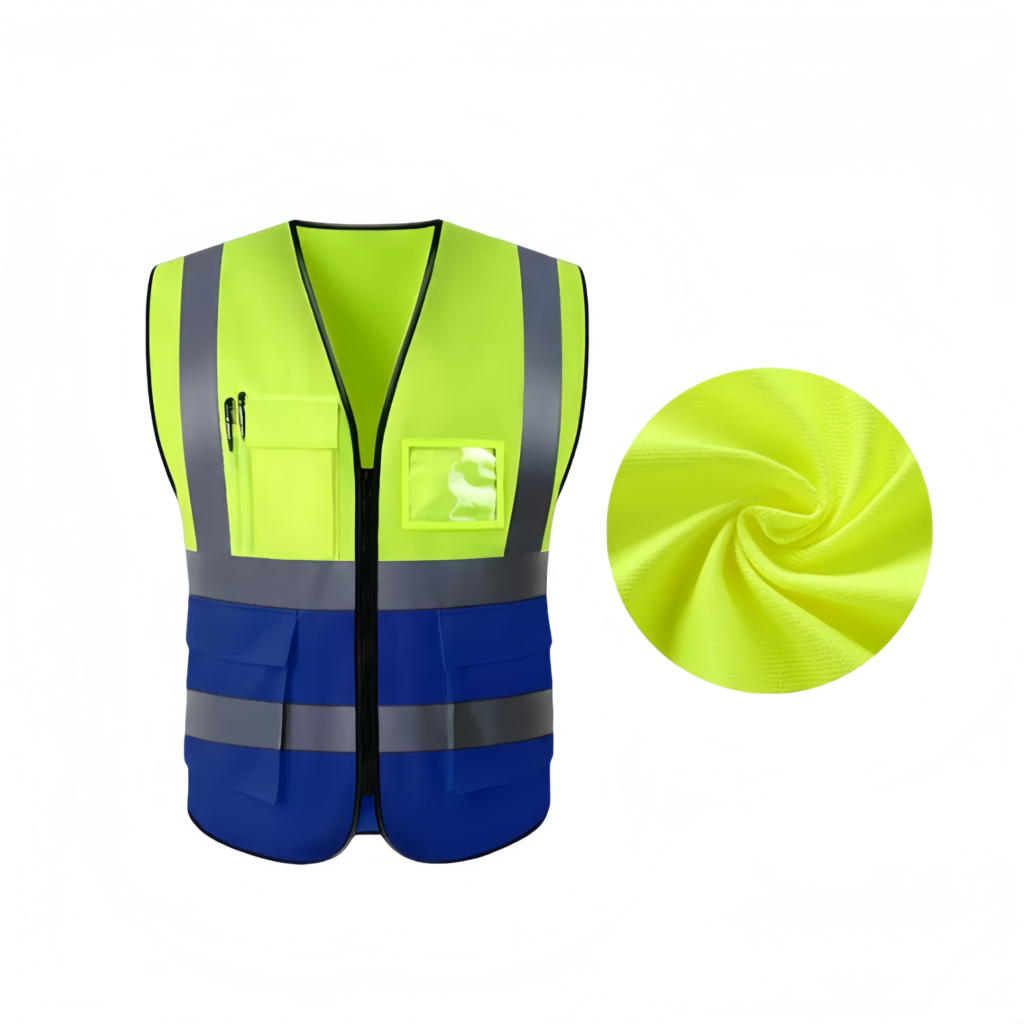
- Features: Wear-resistant, anti-wrinkle, bright colors, low cost.
- Suitable for scenarios: most construction sites and traffic duty locations.
- Advantages: High stability, capable of withstanding long-term working conditions.
Mesh Fabric
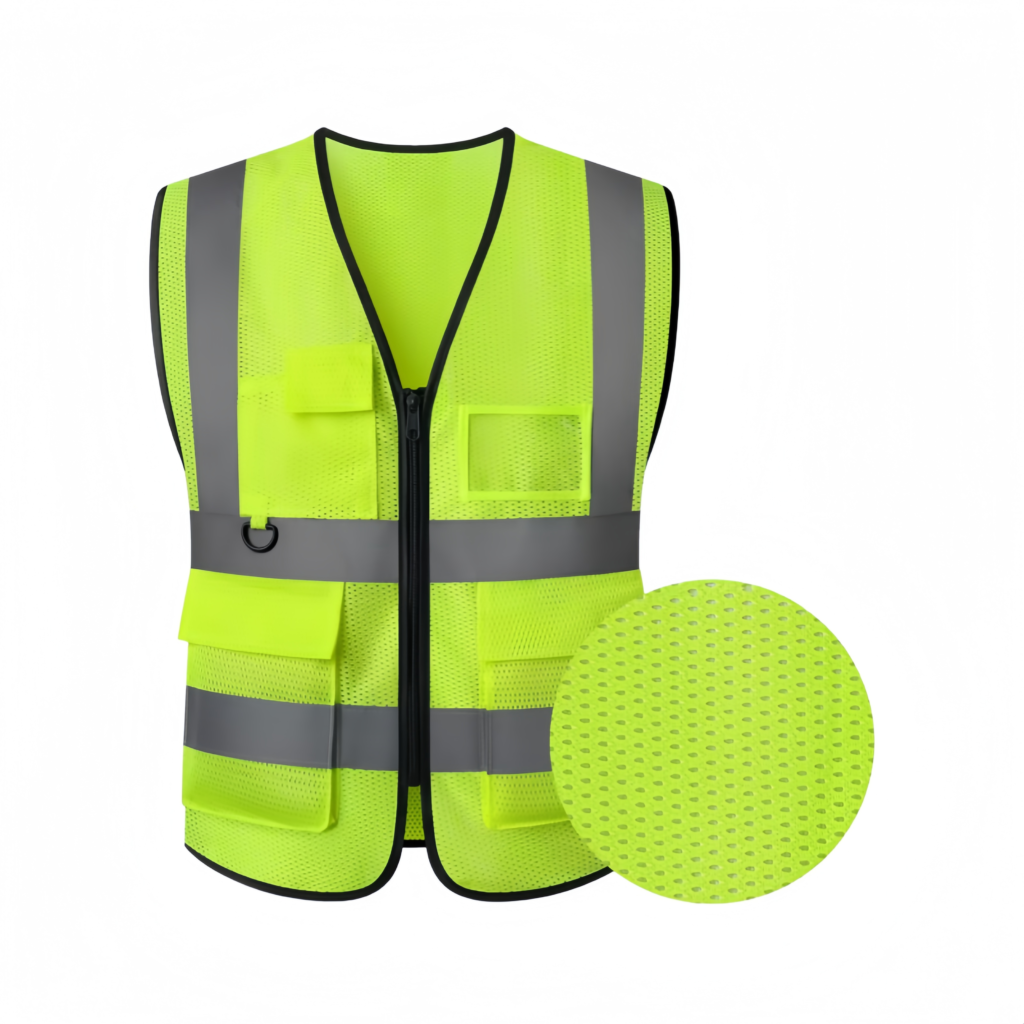
- Features: Breathable, lightweight.
- Suitable for scenarios: hot summer weather or long outdoor work sessions.
- Advantages: Significantly improves wearing comfort and reduces heatiness.
Knitted fabric / TC fabric (polyester-cotton blend)
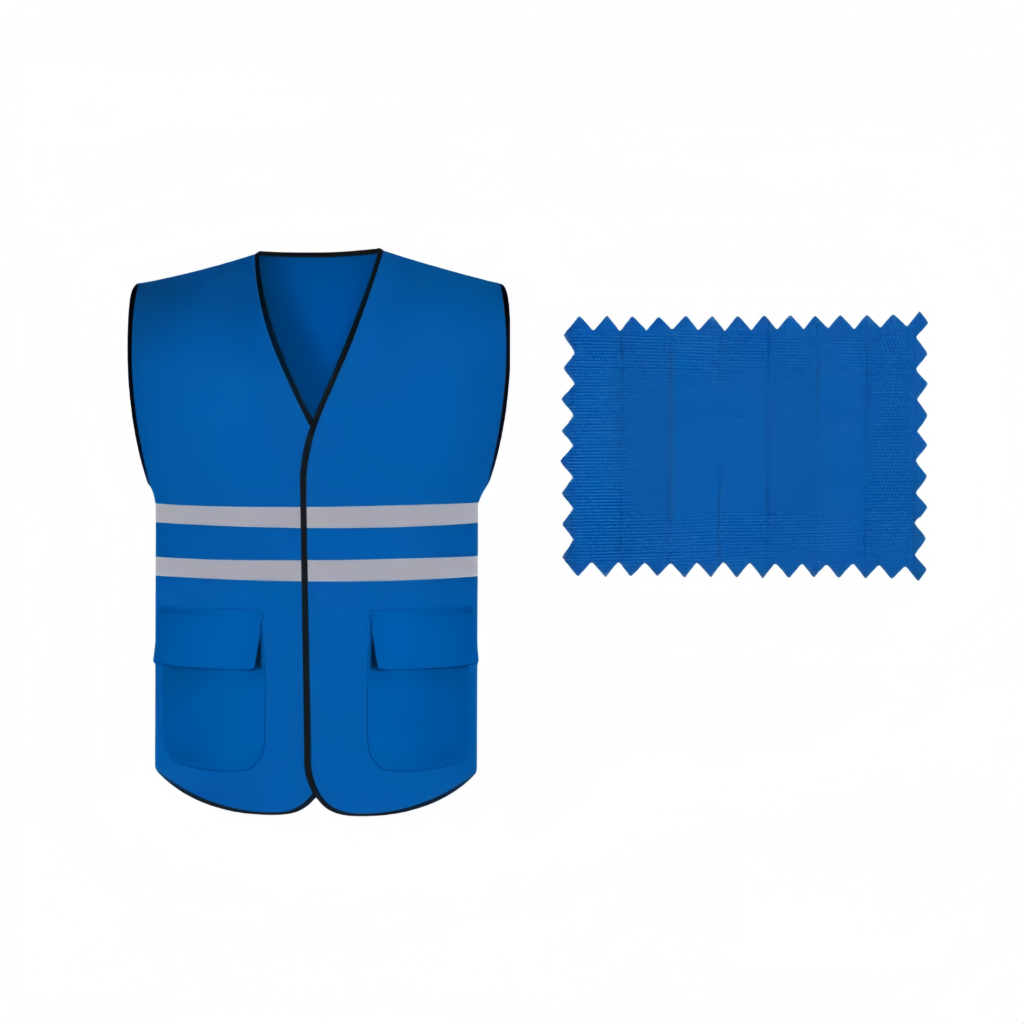
- Features: The fabric has a soft feel and offers a higher level of comfort compared to pure polyester.
- Suitable scenarios: Security, patrol, logistics delivery, and other positions that emphasize comfort.
Functional fabrics (waterproof / flame-retardant / UV-resistant)
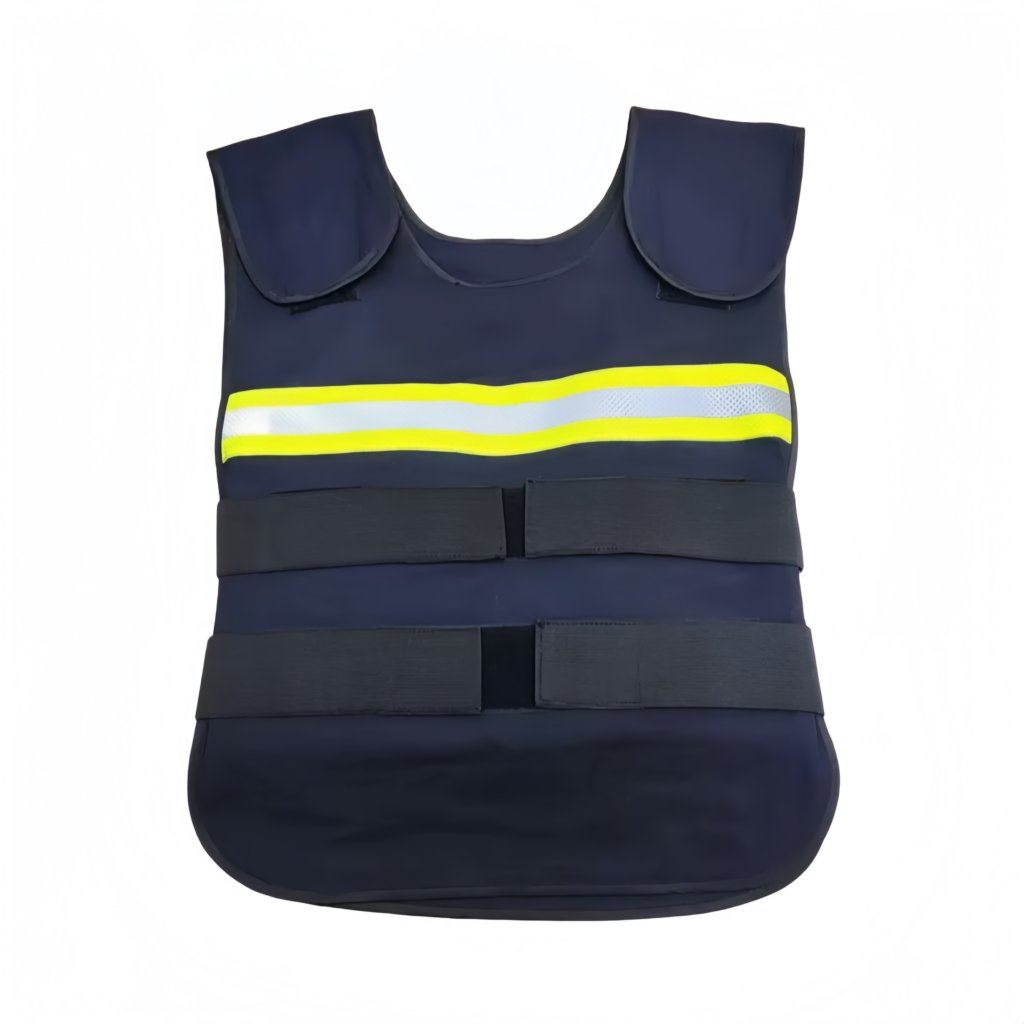
- Feature: Tailored for specific working conditions, enhancing additional protective capabilities.
- Suitable for scenarios: chemical plants, oil depots, environments exposed to strong sunlight, etc.
Comparison of Common Fabrics for hi vis safety vest
Different fabrics used in reflective safety vests have unique characteristics. The following table compares common fabric options in terms of features, advantages, disadvantages, and suitable applications.
| Fabric Type | Caractéristiques | Avantages | Inconvénients | Suitable Applications |
| Polyester | Durable, wrinkle-resistant, bright colors | Affordable, strong durability | Limited breathability, may feel hot in summer | Construction sites, traffic control, general work environments |
| Mesh Fabric | Lightweight, breathable, net structure | Cool and comfortable, suitable for long wear | Less durable, prone to snagging | Hot weather, patrol, logistics and delivery |
| TC Fabric (Polyester-Cotton Blend) | Soft hand feel, blended polyester and cotton | Better comfort, more skin-friendly than pure polyester | Slightly higher cost, less durable than polyester | Security, property management, light outdoor work |
| Functional Fabrics (Waterproof / Flame-retardant / UV-resistant) | Special treatments for additional protection | Provides waterproofing, fire resistance, or UV protection | Higher cost, breathability may be reduced | Petrochemical industry, mining, strong sunlight or rainy environments |
Common Weight Options for hi vis safety vest
The weight (gsm: grams per square meter) of the reflective vest determines the thickness, durability, and comfort of the fabric. The common range is as follows:
- 80 – 100 gsm: Lightweight and thin, suitable for summer and short-term wear, with good breathability, but with average durability.
- 120 – 140 gsm: Medium thickness, commonly found in mesh fabric vests, balancing breathability and durability.
- 160 – 200 gsm: Moderately thick, suitable for autumn and winter seasons or for construction sites requiring higher durability.
- Above 200 gsm: Professional grade, suitable for high-intensity working conditions, usually with additional features (waterproof, cold-resistant).
Tip: For light work in summer or indoors, a lightweight type (about 100 gsm) is sufficient, while for environments requiring long-term wearing (such as construction sites or outdoor patrols), a medium-thick type (120-160 gsm) is recommended; for specific industries (such as petrochemicals or mining), a functional vest with a thickness of ≥ 200 gsm is necessary.
How to balance comfort and safety?
- Summer: Mesh fabric + low weight (mainly for breathability)
- Winter: Knitted fabric / Functional fabric + Medium to High Denier (warm and durable)
- Traffic control/Night work: It is advisable to opt for high-visibility fabrics that comply with the ANSI/CE EN ISO 20471 standard and pay attention to the coverage of reflective materials.
Conclusion
The safety and comfort of a reflective vest depend on the right fabric and weight. Polyester is durable, mesh is breathable, polyester-cotton blends are comfortable, and functional fabrics meet needs like waterproofing or fire resistance. For weight: 80–100g suits summer, 120–160g balances durability and breathability, and 180g+ fits heavy-duty or cold use. Choosing properly ensures both safety and comfort. For custom vests, contact TOPRISE anytime.
